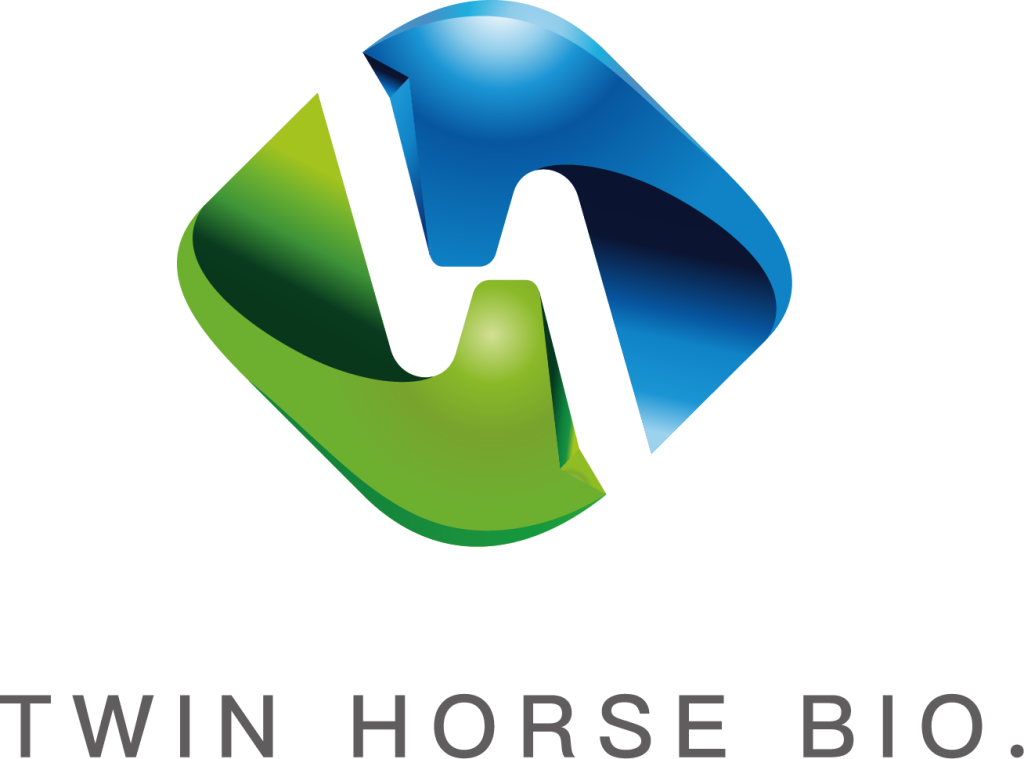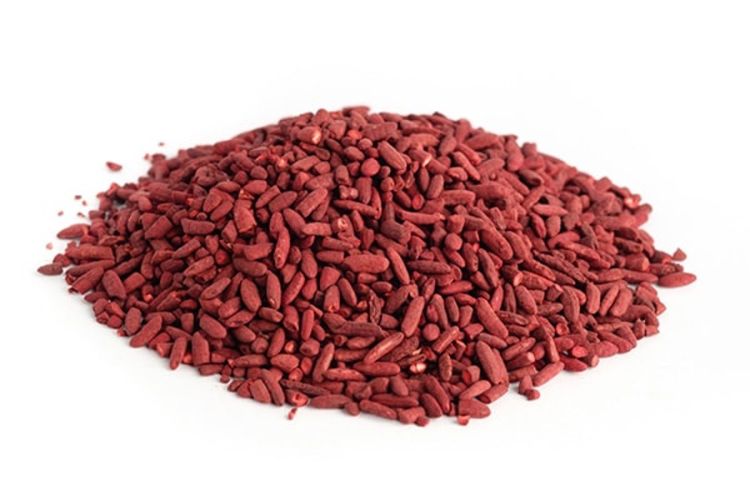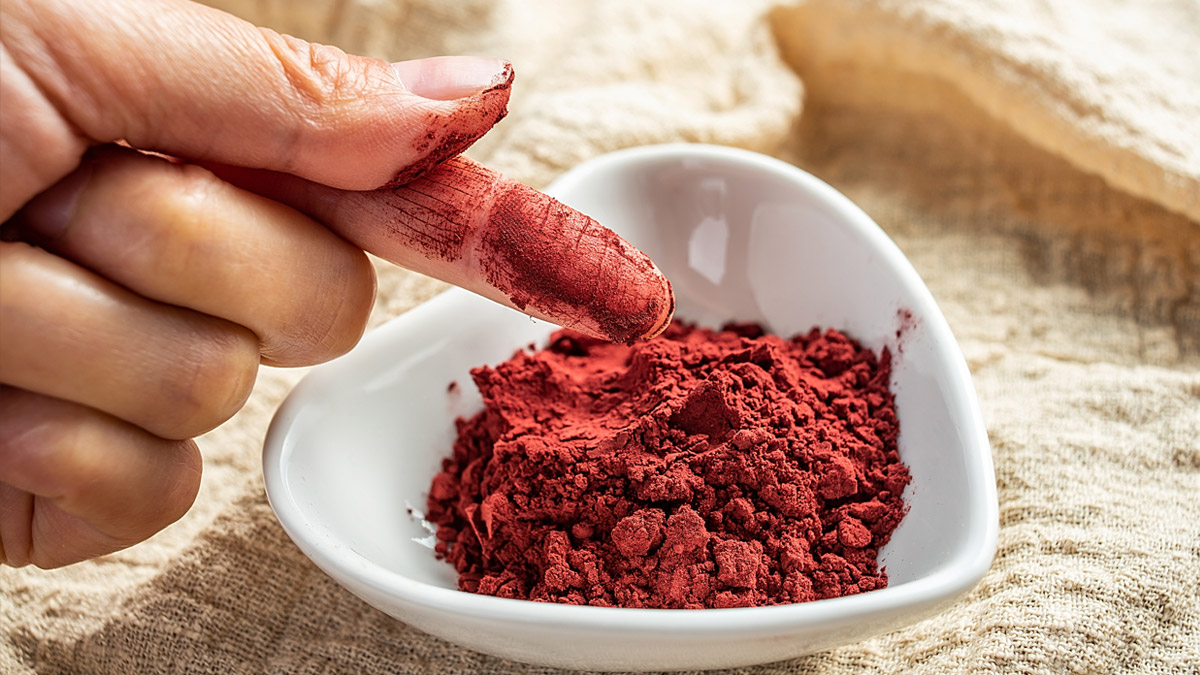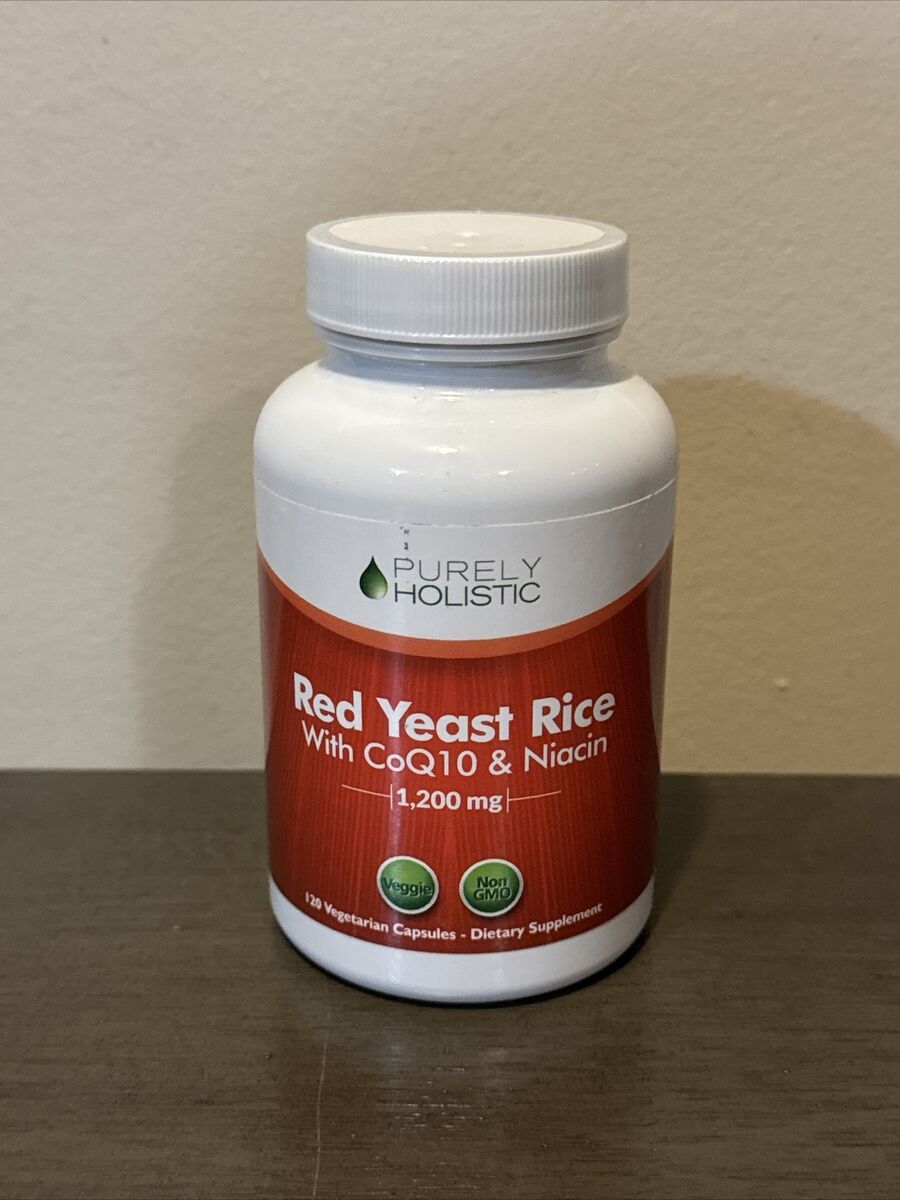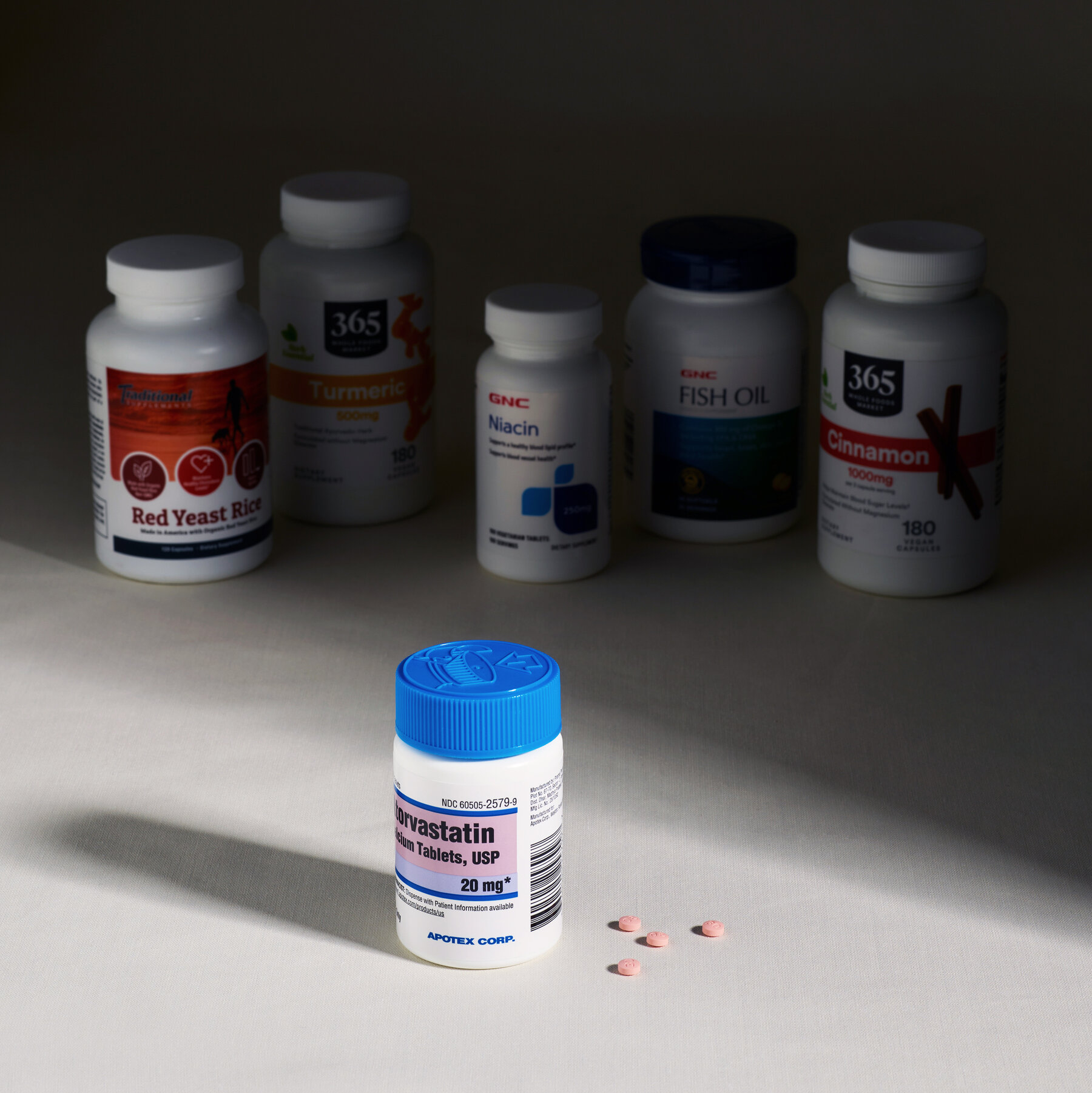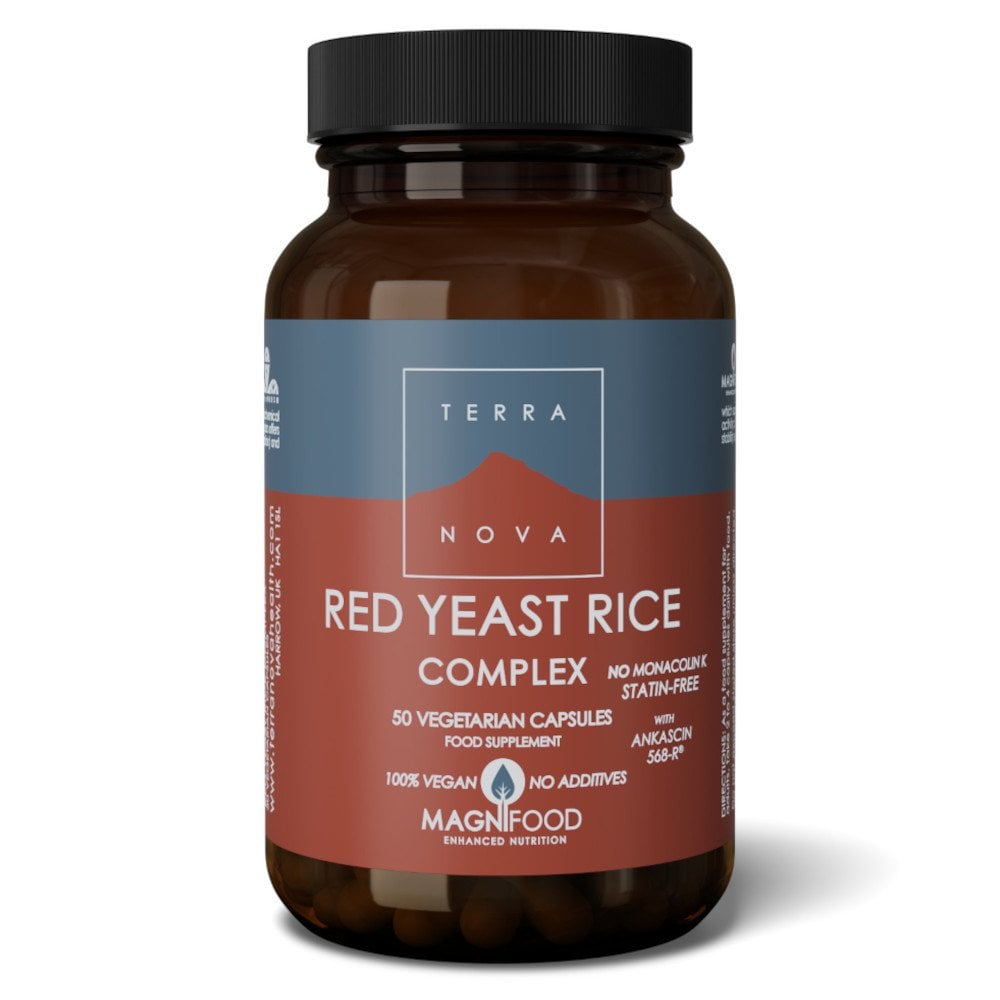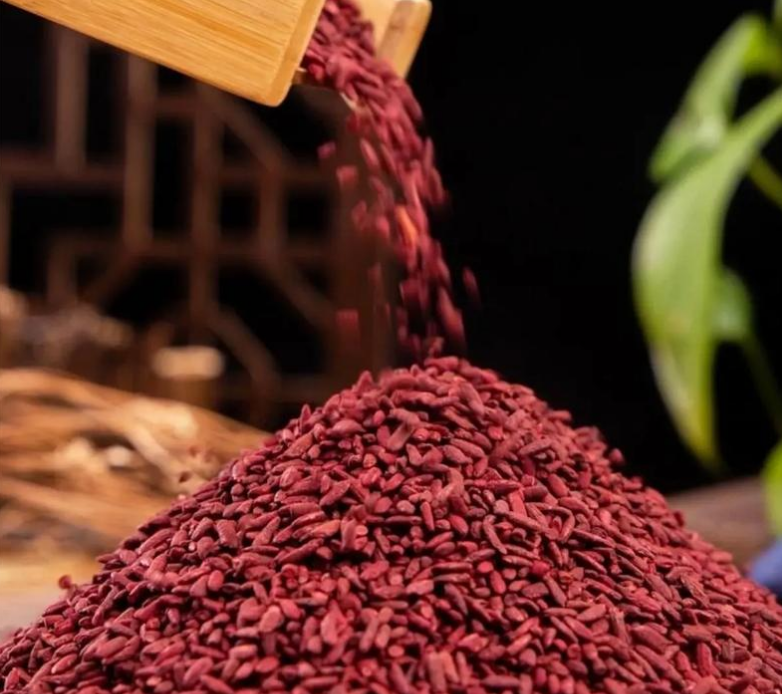No, not all red yeast rice is the same. Variations in monacolin K levels, often ranging from 1% to 2.5%, depend on factors like geographic origin and extraction methods. A 2017 study showed that traditional fermentation methods yield higher monacolin K concentrations (up to 2.5%) compared to modern extraction (around 1%), affecting efficacy.
Strain Variations
Red yeast rice is the product of fermentation of rice with Monascus purpureus, but it would appear that not all strains of this fungus are created equal. Due to different strains, the amount of active compounds, most notably monacolin K responsible for cholesterol-lowering in red yeast rice, may be quite variable. It has been observed that the level of monacolin K can vary from 0.5% to 3% of the total content in a given product, depending on the strain applied. Indeed, a study conducted with a specific strain of Monascus purpureus demonstrated that the red yeast rice produced contained 1.5% monacolin K, which, after 8 weeks of daily use, resulted in an average LDL cholesterol reduction of 19%. By comparison, a product of another strain that contained only 0.8% monacolin K had only a 9% reduction in LDL during the same period. This reflects a difference related to the specific strain. When selecting a red yeast rice product, the strain can affect the consistency of your outcome. Certain strains produce a higher concentration of citrinin, a potentially harmful toxin. High levels of citrinin in red yeast rice could lead to kidney damage, and several studies consider strains containing high amounts of citrinin unsafe. A study reported in the Journal of Agricultural and Food Chemistry observed that some strains of Monascus purpureus can yield as much as 1.5 mg of citrinin per gram of red yeast rice. Some other types produced little or no citrinin and were thus safer to take for longer. This variability further emphasizes the importance of choosing red yeast rice products tested for contaminants to ensure safety along with effectiveness.
This, in real life, means that those who use red yeast rice to keep cholesterol in a manageable range can expect variation among the specific red yeast rice strain used that could potentially impact both efficacy and side effects. For example, a product user with higher monacolin K concentration may show faster rates of improvement in cholesterol levels but can also be at an increased risk for developing statin-like side effects such as muscular pain, problems with digestion, or fluctuations in liver enzymes. A 2010 study published in The Lancet analyzed the side effects of red yeast rice supplements containing different doses of monacolin K. The researchers reported that among participants consuming higher-concentration products, 15 percent experienced side effects, while among the lower-concentration products, only 7 percent of the recipients reported side effects. This data indicates that strain and monacolin K content should be kept in mind when choosing a product, especially by individuals who are sensitive to statins.
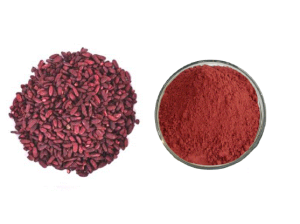
Monacolin K Levels
Monacolin K is the main bioactive component of red yeast rice and may greatly determine the efficacy of the supplement. The content of monacolin K is quite different among the red yeast rice products; the usual declared level is between 0.5% and 3%. According to studies, there is a higher efficacy of LDL cholesterol reduction in the products with high content of monacolin K. A 2011 clinical study demonstrated that supplementation with 2.5% monacolin K red yeast rice resulted in an average 21% reduction in LDL cholesterol after just 8 weeks, while a product with only 0.8% monacolin K yielded a mere 9% reduction. The big difference here really points to the prominence of monacolin K when considering using red yeast rice for cholesterol management.
Safety, apart from efficacy, also depends directly upon the concentration of monacolin K in red yeast rice. Higher levels of monacolin K increase the rate of adverse effects, such as muscle ache, gastrointestinal discomfort, and elevation of liver enzymes, which are commonly seen with statin drugs. A 2010 study published in the American Journal of Clinical Nutrition tested two different red yeast rice formulations, one containing 1.0% monacolin K and the other 2.3%, against each other. Using the higher-dose product, it was learned that side effects were experienced by 12% of those participants, while 6% of those using the lower-dose product experienced similar issues. The data indicates that while higher levels of monacolin K may make cholesterol-lowering effects more pronounced, it also increases the chances of adverse reactions and makes it highly important that users consider with great care the concentration of monacolin K in their red yeast rice supplement.
Extraction and processing methods also account for a very critical role in determining monacolin K content among red yeast rice products. A 2014 study revealed that red yeast rice extracts, produced using a traditional fermentation approach, had significantly higher levels of monacolin K than those products produced with a quicker, more modern method of production. In fact, traditionally fermented products had about 2.2% monacolin K concentration, while the faster-produced extracts contained about 1.1%. This difference can impact not only the price but also overall quality, because in general, higher levels of monacolin K are more expensive to manufacture. Customers who need a higher dosage of monacolin K must ensure that the product undergoes a traditional fermentation process, since these supplements tend to be stronger.
Clinical trial data supports this association between the levels of monacolin K and cholesterol-lowering efficacy. A 2012 meta-analysis in The Lancet examined multiple studies of red yeast rice supplements that contained different doses of monacolin K. The authors found that supplements that contained at least 1.5% monacolin K produced an average LDL cholesterol reduction of 18-25%, depending on the duration of supplementation, whereas supplements containing less than 1.0% monacolin K reduced LDL cholesterol by only about 10%. This discovery underlines the direct relationship between higher levels of monacolin K and better cholesterol-lowering outcomes. However, it also shows that in people with sensitivity to statins in general or subject to side effects from high concentrations of monacolin K, low-dose red yeast rice products are desired to lessen the risk of side effects yet still achieve benefits in cholesterol-lowering.
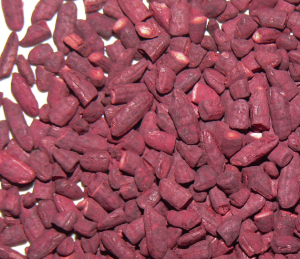
Processing Methods
Red yeast rice is most drastically impacted in its final composition by its method of processing, which includes levels of active compounds like monacolin K. Traditional methods of fermentation-essentially long-cultivated rice with Monascus purpureus-typically result in higher levels of monacolin K than faster, modern methods. A 2015 study compared two red yeast rice products-one produced by traditional fermentation and the other using a rapid extraction process. The traditional method produced a monacolin K concentration of 2.3%, while the product from the rapid method contained only 1.1%. This can make all the difference in the product’s effectiveness. Consumers who want the full cholesterol-lowering effect of red yeast rice should look for supplements that boast traditional preparation methods, which tend to yield a higher potency.
Besides the effects on potency, processing affects the levels of other compounds that may impact red yeast rice safety and efficacy. For example, citrinin is a mycotoxin potentially produced along with lovastatin during fermentation. Citrinin has been considered a nephrotoxic compound, implying that the consumption of this metabolite in large quantities could lead to kidney injury. A 2017 study determined that traditionally fermented red yeast rice had an average citrinin concentration of 0.5 mg/g, while products from more modern methods of processing contained levels as high as 2.0 mg/g. High citrinin levels are a concern for consumers, especially those using red yeast rice supplements over extended periods. Therefore, those interested in minimizing their exposure to this toxin should look for products that have undergone stringent testing for citrinin levels, regardless of the processing method used.
The cost of production is another factor influenced by the processing method. Traditional techniques of fermentation involve longer cultivation periods and more painstaking care; this adds to the cost of the product. Generally, such products tend to be pricier. A 2014 cost analysis study found that red yeast rice produced by traditional methods could be 25-40% more costly than products made using faster techniques of extraction. This cost differential is many times reflected in the level of active compounds, because traditionally fermented products contain a higher amount of monacolin K. To consumers, what this cost difference translates to is that for higher-potency supplements, consumers may have to pay more for traditionally fermented products, although benefits derived from its effectiveness could justify a higher price.
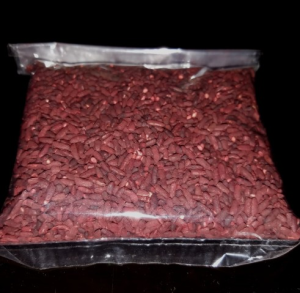
Purity
The purity of red yeast rice represents the corner stone of both its effectiveness and safety. Heavy metals, mycotoxins of citrinin-type, and other foreign substances may affect the product’s quality and health-related value. In 2014, a study tested 20 different red yeast rice supplements sold in the U.S. and found that almost 30% contained more than the acceptable limit of 1 mg per gram of citrinin set by health authorities. The average level among samples was 0.8 mg/g, with concentrations going as high as 2.5 mg/g in some of them. This variability in the levels of citrinin can impose serious health risks, especially to those who have been taking the red yeast rice for a long time, because chronic exposure to citrinin has been associated with kidney damage. Such consumers should be interested in the purity of red yeast rice products that are tested for citrinin and other contaminants to ensure that they are safe for long-term use.
Besides citrinin, other adulterants that may be present in some red yeast rice products, particularly those sourced from countries with lower standards of quality control, include heavy metals like lead, arsenic, and cadmium. A 2017 study on the purity of red yeast rice sourced from different countries found that 15% of products tested contained detectable levels of lead, with one product having a lead concentration of 0.5 µg per gram. This level, while below FDA’s established safety limit of 10 µg per gram for lead in food, could still pose a risk for those who take the supplement of red yeast rice regularly. A study released in 2019 showed that nearly 8% of the products tested contained levels above the safe threshold for long-term consumption. This again raised the expert opinion to recommend that consumers purchase red yeast rice products that undergo third-party testing for heavy metals.
Overall, the purity of red yeast rice depends on production and processing methods. Traditional fermentation products of the red yeast rice have purer products compared to the more rapid methods of product extraction. In 2015, a study was done to compare various products using the same Monascus purpureus strain that was processed in different ways. The results showed that products made through slow fermentation contained fewer contaminants, where only 5% showed detectable levels of heavy metals, while those made through modern methods showed up to 15% contamination with various metals and mycotoxins. This is an indication that while the traditional method might be more tedious and time-consuming, they often yield purer products. Consumers seeking a superior red yeast rice should look to products from those manufacturers adhering to these more rigorous, traditional production processes in order to guarantee the purity of their supplements.
Extraction Techniques
The technique of extraction used to obtain the red yeast rice largely influences the concentration and bioavailability of its bioactive compounds, majorly monacolin K, which is considered mainly responsible for its cholesterol-lowering activity. Traditional extraction usually involves a fermentation process in which Monascus purpureus is cultivated on rice for weeks. This allows the fungus to naturally produce monacolin K. As this tends to be a more natural and slower process, the concentrations of active ingredients are usually higher. In one 2013 study, it was determined that red yeast rice products extracted by traditional fermentation methods contained, on average, 2.5% monacolin K, while those products that had gone through more modern extraction techniques, such as solvent extraction or high-pressure processing, tended to have about 1.0% monacolin K. This difference in concentration is directly related to the method of extraction, as more rapid techniques often result in lower yields of the active compound due to the harsher processing conditions.
On top of concentration, the extraction techniques also affect the purity of the final product. Modern extraction processes, utilizing ethanol or acetone for example to extract active compounds from the rice, may result in residual impurities from the solvent itself or other chemical by-products. One such study, from 2016, investigated the purity of red yeast rice products extracted by different techniques and reported that products resulting from solvent extraction usually contained residual solvents in trace amounts, often within a range from 0.2% to 1.0%. In sharp contrast, red yeast rice products that relied on traditional fermentation had much lower impurities at 0.1% residual solvent, thus being considered a better alternative for those customers who seek a cleaner and more natural product. These impurities can also influence the supplement’s safety because some of the solvents may eventually result in adverse reactions when administered to the consumer over some time.
Moreover, the bioavailability of active substances in red yeast rice might be affected, which is a proportion of active ingredients probably absorbed and utilized by the organism, depending on the extraction technique applied. One 2018 study compared the bioavailability of monacolin K in red yeast rice extracted by both traditional and modern methods. The results were astounding: products made with a traditional fermentation method boasted a bioavailability rate of 70%, while those processed with solvents had a much lower bioavailability of 50%. This would indicate that even though the solvent-extracted products have higher concentrations of monacolin K, the body cannot absorb the compound as effectively. Maximal health benefits due to RYR ingestion, such as a significant reduction in LDL cholesterol, depend not only on the concentration of monacolin K but also on its bioavailability.
Geographic Origin
The origin of red yeast rice speaks volumes about its quality and efficacy, as general features in climate, soil conditions, and local peculiarities of agricultural practices could affect the chemical composition of rice and the strains of Monascus purpureus used for fermentation. Comparison research conducted in 2015 into red yeast rice products sourced from various regions of Asia showed quite sharp differences in the concentration of monacolin K. Samples from southern China, where the climate is warm and humid, contained an average of 2.2% monacolin K, whereas in northern China, which has a cooler and drier climate, it contained only 1.0%. The disparity in these results may point out how much environmental factors, like those in the specific locations, can affect active compound production. The higher temperatures and humidity of southern China create conditions that favor more vigorous fermentation, which results in higher yields of monacolin K, associated with more pronounced cholesterol-lowering effects.
Aside from monacolin K, contaminants such as citrinin also vary with the geographic origin of the red yeast rice. One study published in the Journal of Agricultural and Food Chemistry in 2018 said that, on one hand, red yeast rice from Southeast Asia generally had higher contents of citrinin than products from other regions. Specifically, products from Thailand contained an average of 1.4 mg of citrinin per gram, while those from Vietnam had 1.0 mg per gram. In comparison, red yeast rice produced in Japan and South Korea showed levels that were significantly lower, at an average of 0.2 mg per gram. These differences can be reasonably explained by the variation in local fermentation practices and variability in the strains of Monascus purpureus employed. The higher levels of citrinin put a potential health risk, especially when red yeast rice is consumed over a long period, hence, a concern for consumers who would want to take into consideration the origin of the product to minimize contact with this toxin.
Geographic origin also determines the cost and availability of red yeast rice. Prices tend to be more reasonable within economies of scale, where it is mass-produced. Countries such as China and India produce large quantities of red yeast rice, utilizing available resources that also minimize the price. For instance, Chinese red yeast rice is usually sold between $10 and $15 per kilogram and therefore is often one of the cheapest choices on the market. In contrast, items originating from smaller producers or regions with less favorable conditions, like certain areas of Europe or North America, are much more expensive, reaching prices as high as $30 to $40 per kilogram. This price differential often emanates from the higher cost of production, given expensive labor, environmental controls, and more rigorous quality testing. For a consumer looking for a quality product at a lower price, a red yeast rice from China might be more affordable, but they must be aware that any product must be tested to ensure lack of contaminants.
Additives
Safety and efficacy in red yeast rice supplements can be severely impacted with the presence of additives. A great many manufacturers add other substances to enhance shelf life, appearance, or effectiveness, but some additives diminish the quality or introduce risks. A 2017 study revealed that 40% of the commercially available red yeast rice products contained additional preservatives such as BHT (butylated hydroxytoluene) or BHA (butylated hydroxyanisole), commonly used to extend shelf life. These synthetic antioxidants, though generally recognized as safe in small quantities, have been linked to potential health concerns when consumed over long periods. For example, BHA in high doses has demonstrated carcinogenic effects in animal studies, a reason health experts recommend caution, especially for those consumers who are using red yeast rice as a supplement on a continuing long-term basis. Red yeast rice products with these types of additives may not be the best suited for individuals looking for a pure, natural supplement.
The other common additive in red yeast rice products is rice flour, often added to help form tablets or capsules. Rice flour in itself is generally considered innocuous; however, adding a filling does dilute the active compound concentration in the product. Testing the concentration of monacolin K in products with and without added rice flour was the purpose of one 2018 study. The results showed that the various products that contained rice flour had an average 15% lower monacolin K level compared to those without any fillers. This difference is significant because the key benefits from RYR emanate through its active ingredients, mainly monacolin K, which plays the biggest role in lowering LDL cholesterol levels. Therefore, individuals seeking maximum potency from their red yeast rice supplements should take great care when it comes to products that utilize fillers since these may soften the effectiveness of a supplement.
Some red yeast rice products incorporate additional herbal ingredients meant to further enhance the supplement’s effects; such ingredients include garlic and coenzyme Q10. For example, one 2019 analysis of red yeast rice supplements found that 20% of products marketed as “cholesterol-lowering” included garlic extract as an added ingredient. While garlic has been shown to have positive heart health benefits-especially in regard to blood pressure and circulation-combining it with red yeast rice can affect the overall bioavailability and efficacy of the supplement. It showed that, in products with added garlic, the absorption rate of monacolin K was reduced by as much as 10%, likely as a result of the interaction between the two substances. This interaction may result in an effect that is less effective at lowering cholesterol, even though the garlic itself may have complementary effects. People should, therefore, be aware of these interactions and make judgments on whether the combination of ingredients in a supplement will meet their health goals.
